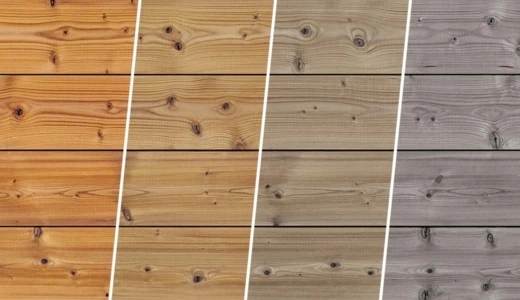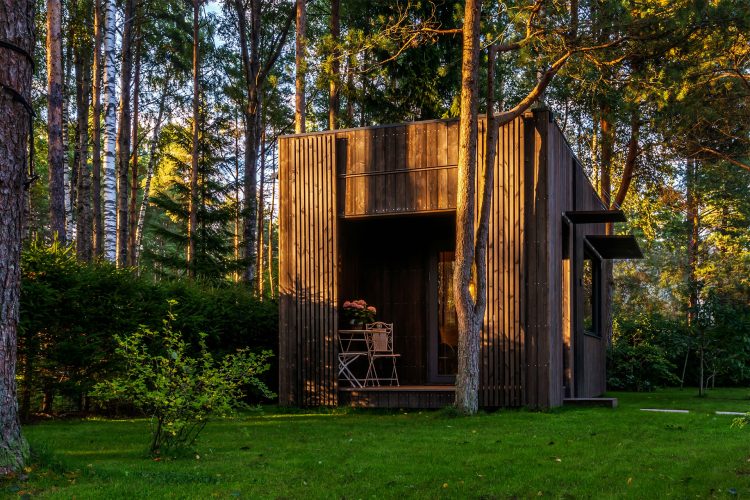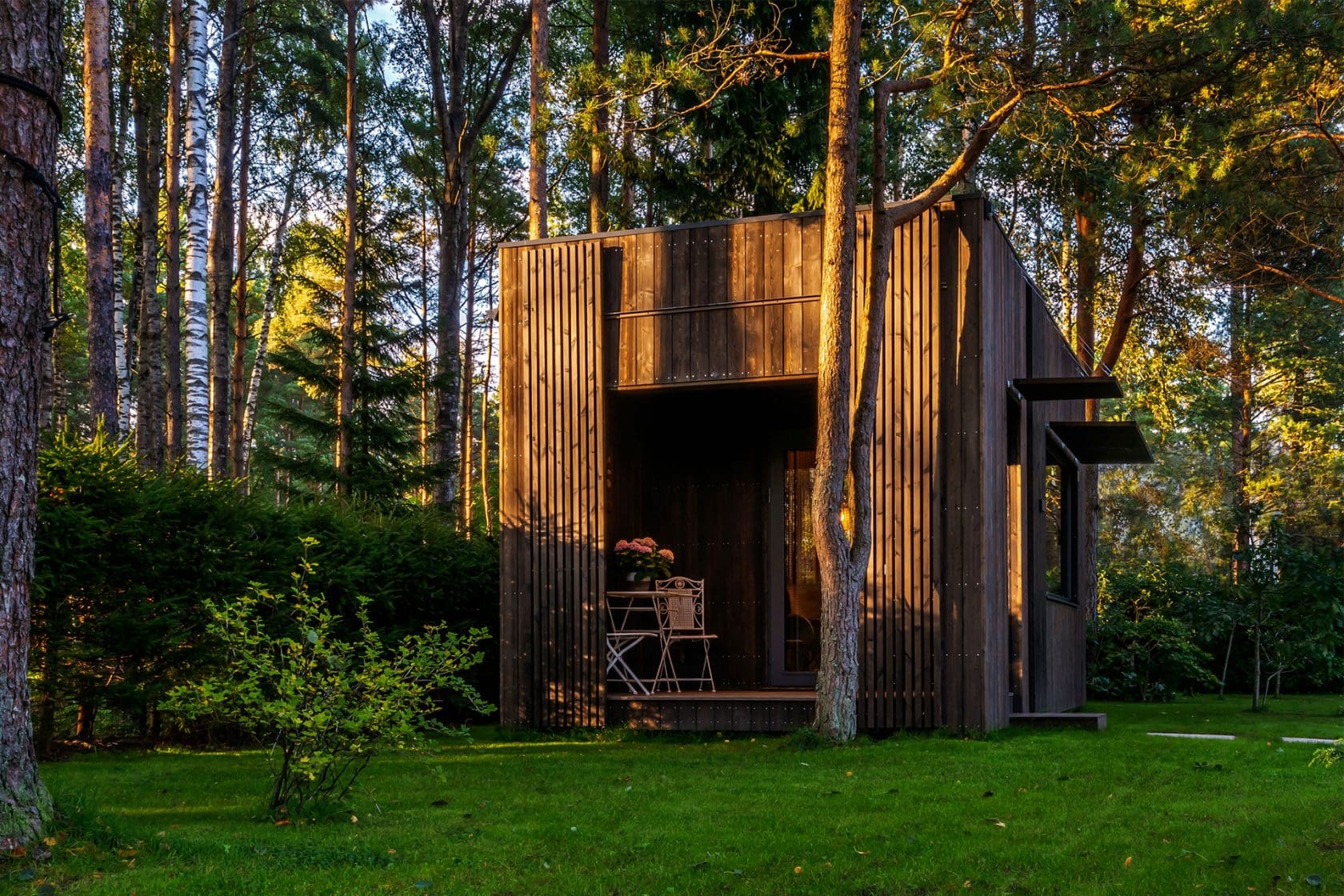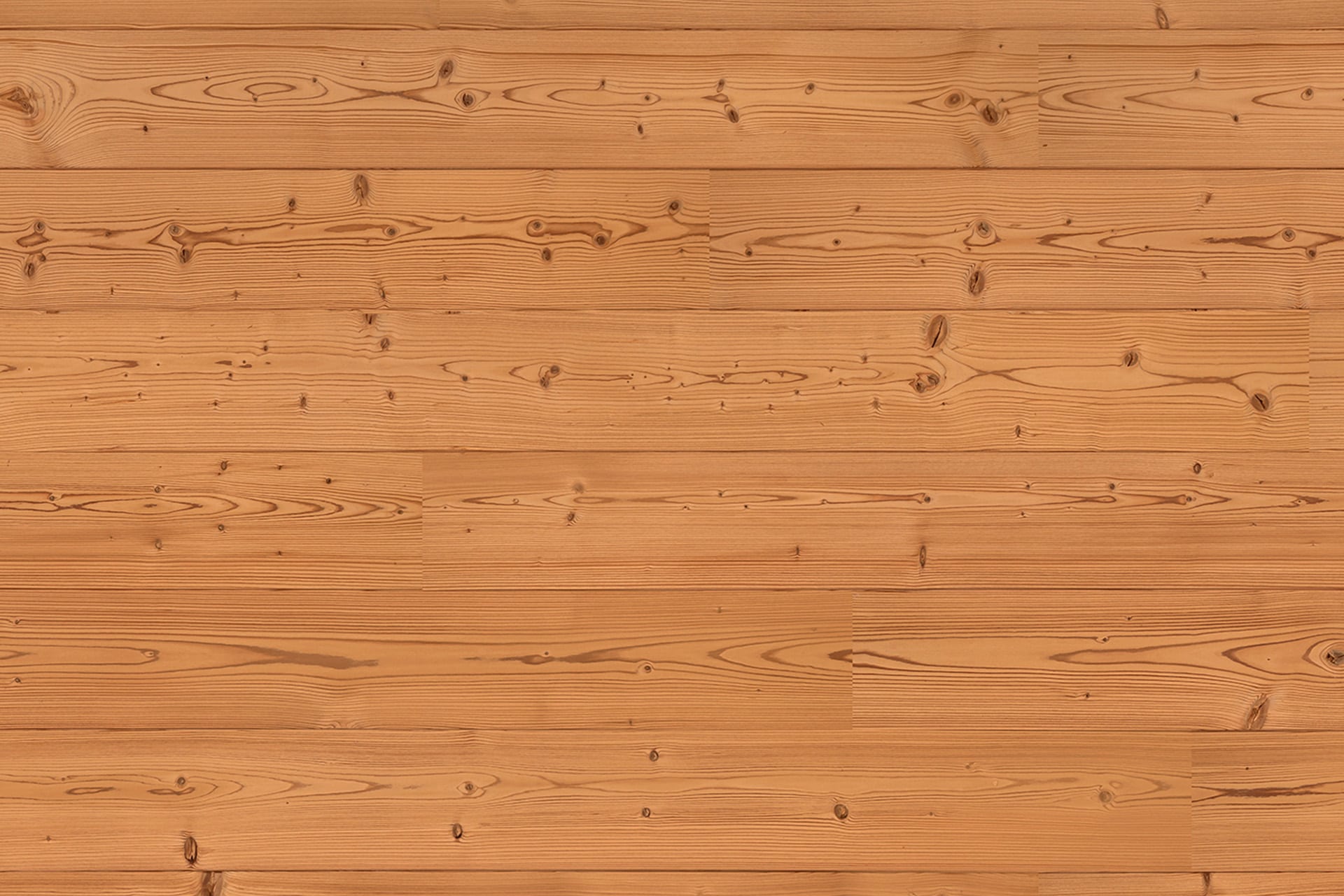
Highly durable cladding combined with natural beauty
Thermally modified spruce cladding from our Benchmark range gives your façade a natural rustic appearance with visible knots. Thermal modification gives spruce excellent weather resistance and durability, as well as a naturally beautiful light-golden tone.
Thermally modified wood is a natural, durable and environmentally friendly choice.
| Application: | Cladding |
| Species: | Thermally modified spruce |
| Modification level: | Intense |
| Use: | Exterior, interior |
| Durability class: | 1 (25+ years’ protection against wood decay) |
| Finish: | Unoiled |
| Texture: | Smooth, brushed |
| Installation types: | Visible, hidden |
| Installation methods: | Screws |
Highly durable cladding with beautiful knots

VISIBLE KNOTS
Showcasing the natural beauty of spruce

THERMALLY MODIFIED WOOD
Thermally modified wood is more durable with a lower moisture content

DURABILITY
Thermory’s thermo-ash cladding has the highest available durability class

SUSTAINABLE
Wood sourced from sustainable forests with chemical-free modification
Why choose Benchmark Thermo-Spruce?
If you prefer rustic, natural-looking softwood but you need premium durability, Thermory Benchmark thermo-spruce is the perfect cladding material for you.
Thermal modification gives spruce the highest durability rating (class 1, 25+ years) so your façade will look great for decades.
The wood’s reduced moisture absorption capability and rate from thermal modification results in less moisture-induced deformation.
We offer thermally modified spruce with the Nordic Swan Ecolabel, which certifies that the wood originates from responsibly managed forests, is free of chemicals and is extremely durable when used outdoors.
Additional options for easy installation and a flawless finish

HIDDEN FIXING
An attractive finish with no visible screws

END-MATCHING
Reduces waste, saves expenses

EASY INSTALLATION
Ingeniously simple fixing methods

BRUSHING
Highlights the wood’s natural grain

Spruce produces less resin
Norway spruce (Picea abies) is a coniferous tree of the pine family in the genus Picea, that is widespread in Europe.
Without any treatment, spruce wood is lightweight, soft and almost white in color with medium mechanical properties. Spruce splits more easily than pine but it is less resinous. The wood is very well suited for thermal modification, which makes it significantly more durable and stable while also giving it a beautiful golden-brown tone.

The color of the wood changes over time
Thermal modification gives spruce wood a beautiful golden-brown tone.
As with any wood, the surface of thermally modified spruce will fade to a natural silver-gray color over time. This process starts immediately after the products are installed and can take a few months to several years depending on how much UV light they are exposed to. The durability of the boards is not affected.
If you would like to preserve the darker tone of thermally modified wood, we recommend oiling the boards once a year using a UV-resistant oil.

Wall cladding maintenance To oil or not to oil?
Thermally modified wall cladding does not necessarily require surface treatment. However, if you would like to preserve or change the tone of thermally modified wood, we recommend oiling the boards before installation using UV-resistant oil and repeating the oiling process every 3 years. The oil should be applied only to clean, level, dust-free surfaces. Before applying oil to the whole cladding, test it on a small piece of wood using a small quantity of oil. Observe the oil manufacturer’s instructions.
Three recommendations for installing Benchmark thermo-spruce cladding
To ensure that your paneling lasts as long as possible, it’s extremely important that you use the correct installation techniques.
For the substructure, we recommend using joists of thermally modified spruce with durability class 1. This way, the substructure will last just as long as the paneling.
By choosing cladding with end-matching, you can minimize time, labor and material costs when installing boards of different lengths. With end-matching, the boards don’t necessarily need to meet directly over a joist.
When using screws for installation, don’t force them too deep into the wood – to avoid water penetration, the screw heads should be almost flush with the wood surface.




